#national historical museum
Photo
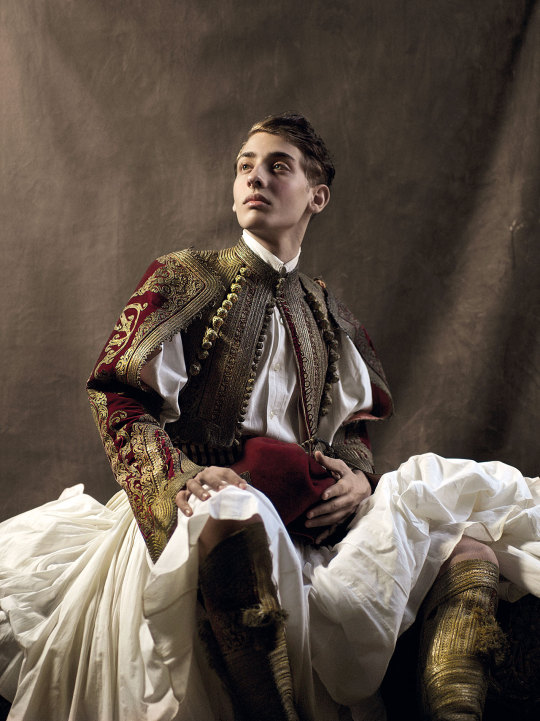



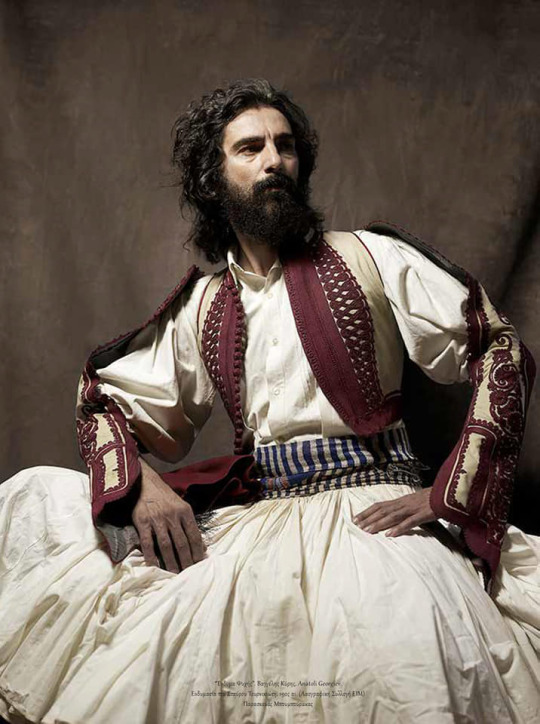

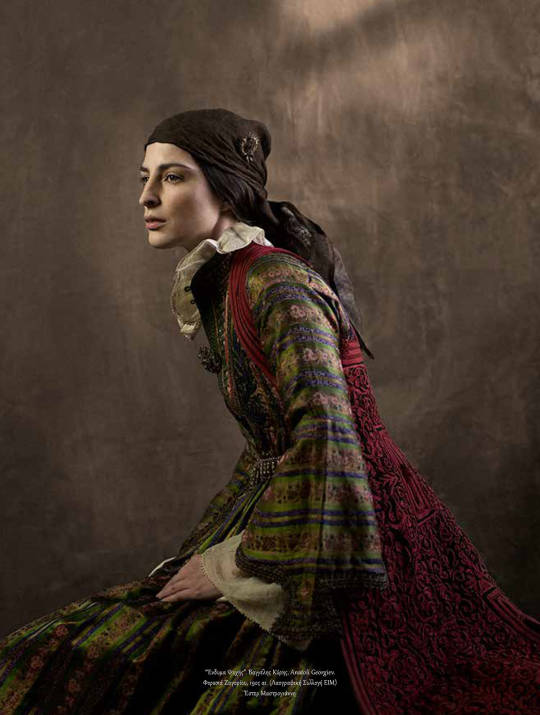
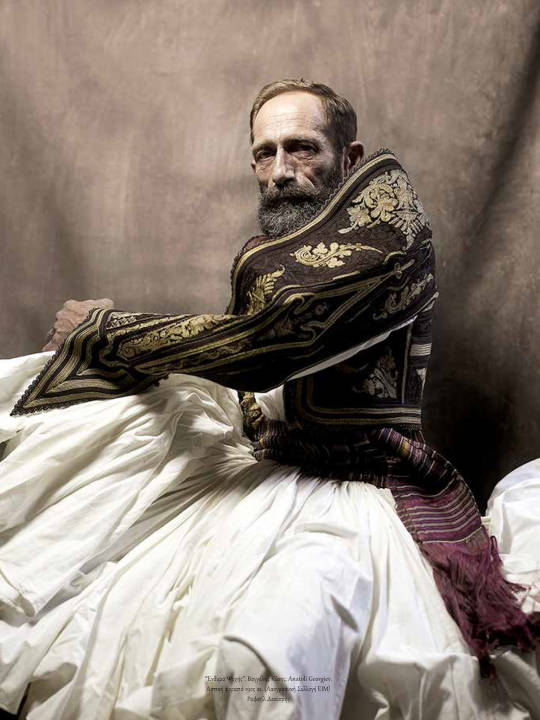
Newly exhibited photos from the project Ένδυμα Ψυχής - Raiment of the Soul, collaboration of photographer Vangelis Kyris and Bulgarian embroidery artist Anatoli Georgiev who present Greek traditional costumes, which are exhibits of the National Historical Museum of Greece. The exhibition is currently hosted in the Acropolis Museum, until March.
Attire of King Otto of Greece, 19th century.
Dress from Nisyros island, 19th century.
Dress from Zakynthos (Zante) island, 18th century.
Attire of Dimitris Mavromichalis, aide-de-camp of King Otto.
Attire of Stavros Tournikiotis, 19th century.
Urban dress of Old Athens, 18th century.
Dress from Zagori, 19th century.
Urban attire, 19th century.
See more photos of the project x, x, x and x.
#greece#europe#historical fashion#traditional clothing#folk clothing#vinatge#fashion#photography#culture#history#national historical museum#king otto#nisyros#zakynthos#zante#athens#zagori#dodecanese#greek culture#heptanese#ionian islands#attica#sterea hellas#central greece#ioannina#epirus#greek islands#mainland#large
9K notes
·
View notes
Text
If you have any questions as you plan your trip to the national historical museum, http://nusafm.org/Default.aspx please does not be uncertain to make apply of the question. Please let us know how we can assist you in planning your trip to this national historic center. We look forward to your visit!
0 notes
Text

National Building Museum, Washington, DC
photo: David Castenson
179 notes
·
View notes
Text
In celebration of seeing the first fireflies of the season:
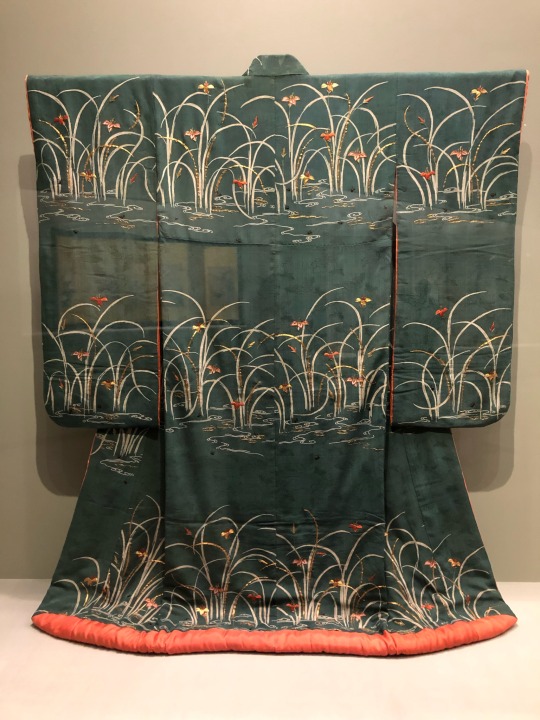
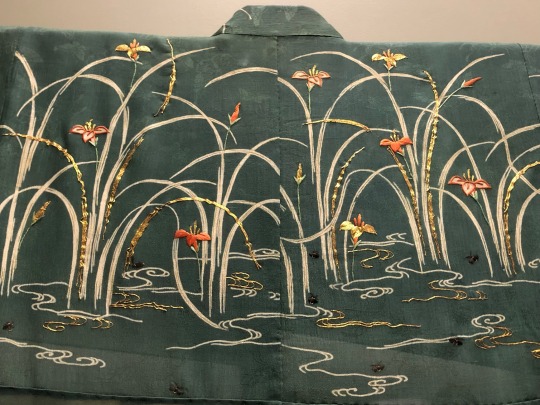
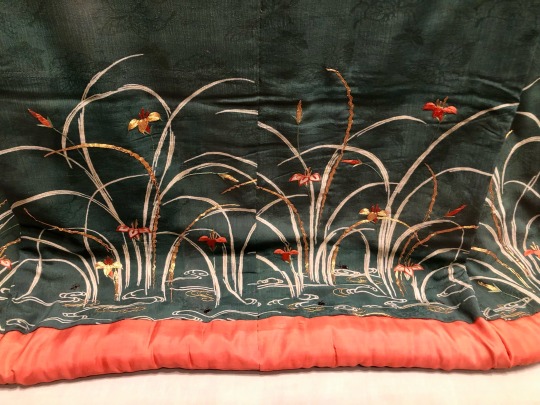

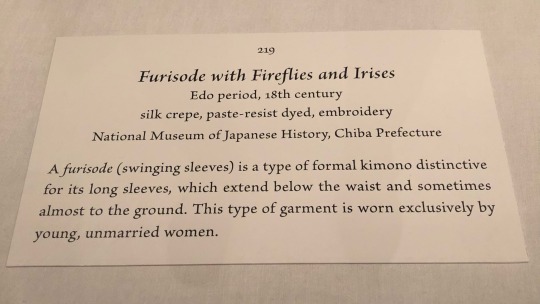
Furisode with Fireflies and Irises
Japan, Edo period, 18th century
silk crepe, paste-resist dyed, embroidery
National Museum of Japanese History (photographed on display at The Life of Animals in Japanese Art exhbition at the National Gallery of Art DC in 2019)
#Japanese art#East Asian art#Asian art#18th century art#kimono#furisode#historical costume#garment#embroidery#irises#fireflies#National Gallery of Art DC#The Life of Animals in Japanese Art#museum visit#exhibition#textiles#National Museum of Japanese History
772 notes
·
View notes
Photo

Open Robe
c.1787
National Museums of Northern Ireland (Catalogue Number: BELUM.T2411)
#open robe#fashion history#historical fashion#1780s#georgian era#georgian fashion#18th century#1787#pink#stripes#satin#national museums of northern ireland
445 notes
·
View notes
Text
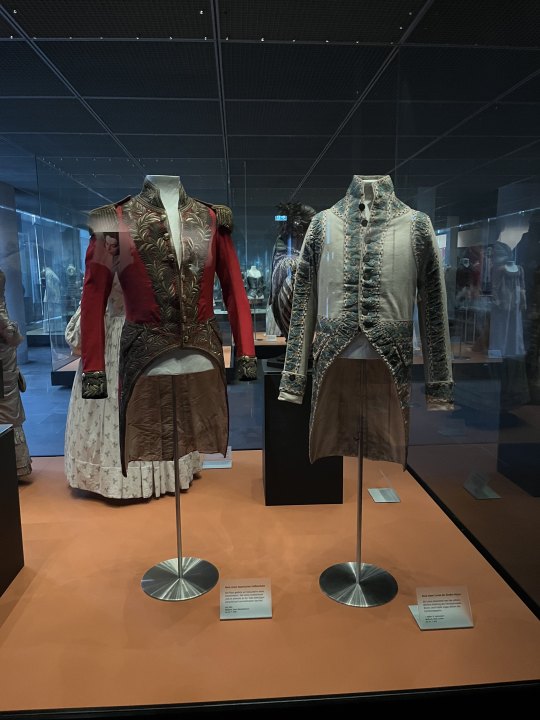
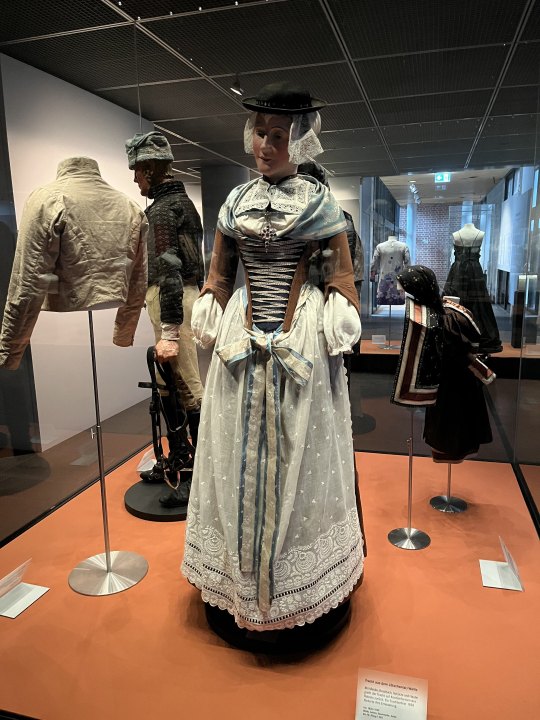

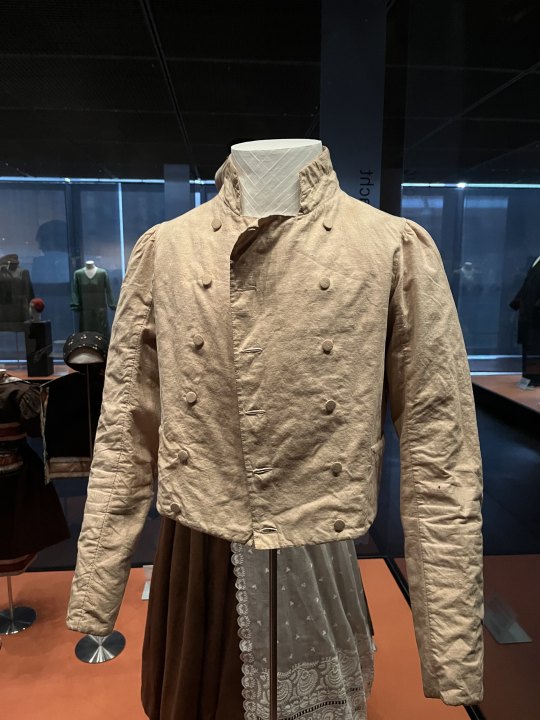
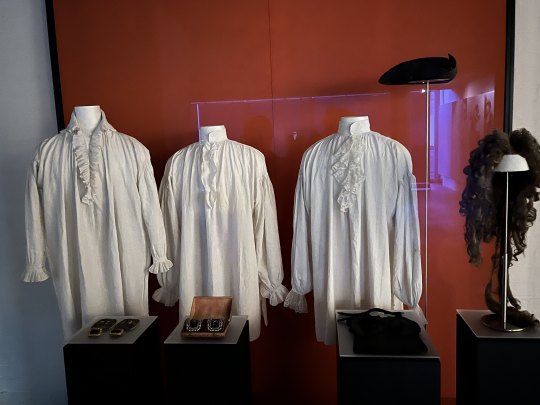



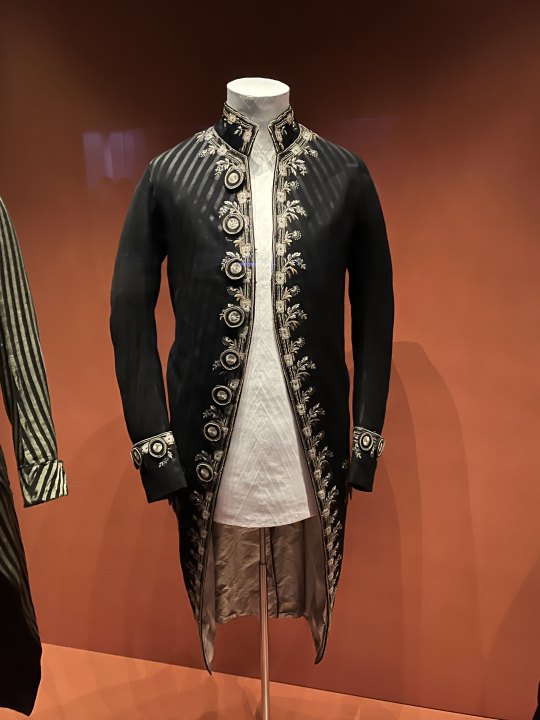

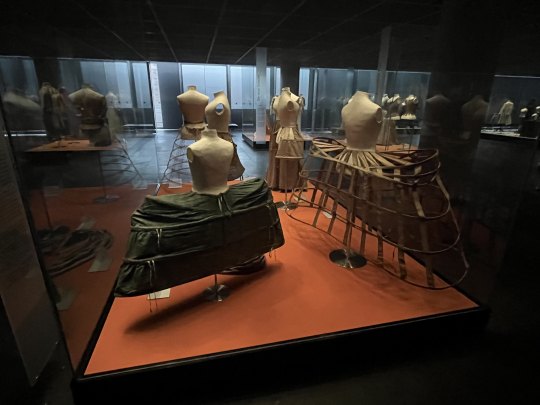
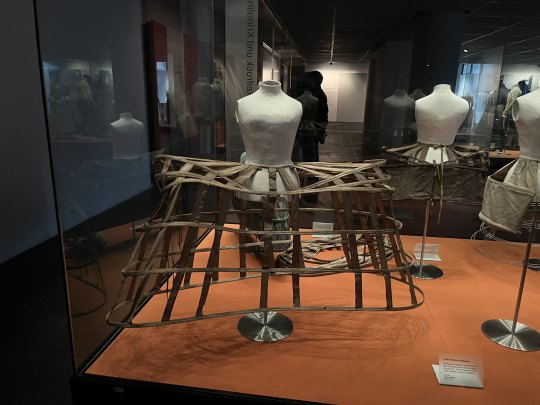
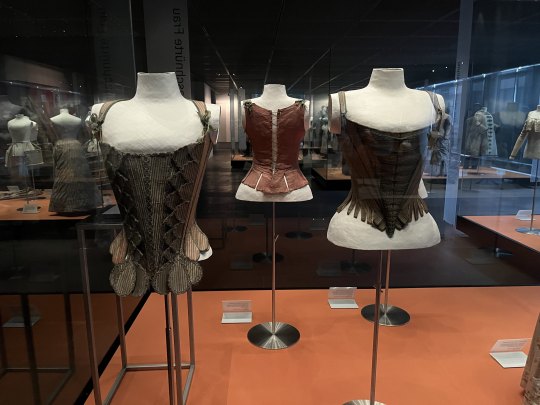

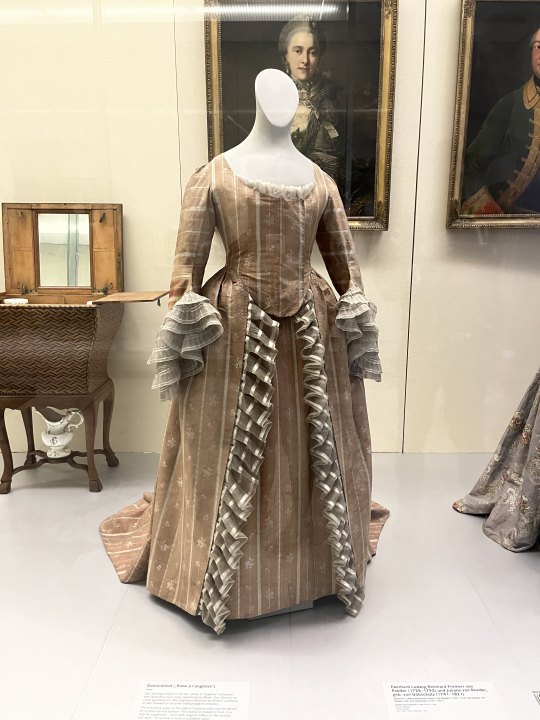
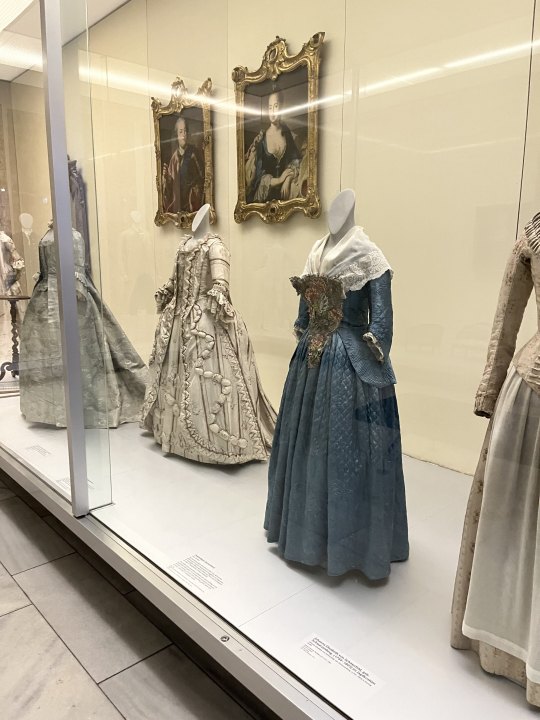
And here, as promised to the dear @vinceaddams come a lot of extant Garments from my recent Visit at the German National Museum in Nuremberg. I am trying to give as much Information about each Picture as I can though unfortunately not all of the Pictures were taken by me and I could take Pictures as extensively (including Info Signs) as I would have wanted, lest I be abandoned in the Clothing Section. Also the whole Section was awfully dim, which made it rather difficult to read some of the Signs. The last three Pictures were taken in a different Section, thus the more pleasant Lighting.
Servant Livery, bavarian Court, mid 19th Century (left); Servant of the Count of Cannotreadhisname, first half 19th Century (right)
Woman's Folkdress, Lötschental/Wallis (Switzerland), Museum dates it 1830/1905 which is an awfully broad Range, but maybe it was altered later; shows wonderfully how late 18th Century Styles were preserved in european Folkdress that came to be in the 19th Century proper
Various Men's Garments throughout the 18th Century, as there are Closeups of each, the respective Detailinformation will be provided further down.
Men's Spencer, c. 1810s-1820s, Linen and Cotton, the Sign didn't say it explicitely but due to it's Placement in the Exhibition and comparable other Pieces I have seen, I think this is more of a common Man's Piece of Clothing.
Three Men's Shirts, various Shoebuckles, a cocked Hat, a Periwig and what I assume to be a Hair Bag. This Display Case had a rather badly illuminated Sign, so sadly I have no further Details about the Pieces.
Justeaucorps, c. 1695, Wool, Silk, Metal Trim.
Waistcoat, c. 1695, Silk, according to the Museum it was worn together with the Justeaucorps, which seems to be a nice Colour-Combination.
Breeches, 1790-1800, Silk. Very pretty Pair, but the bad Lighting doesn't really let it show.
Habit à la francaise, c. 1790, Wool, Silk, Embroidery (What a Material Specification...). I really like the Combination of those subtle dark on dark Stripes and the Embroidery.
Tailcoat, c. 1790/1795, Cotton, Silk, Linen, really peak 1790s Look honestly.
Very wide Court Panniers, with Pocket Hoops and Crinoline in the Background. Alas no Detail Information for this and the next two Pictures.
Frontal View of the Pannier. I suppose I have to get one of those at some Point, if only for how extra they are.
Three Pairs of Stays, two from the Front, one from the Back. Sadly I don't feel confident enough to Date those and I have no Pictures showing the Info Signs well enough.
Lots of pretty Dresses that were exhibited in another Section of the Museum. The right one is a Robe à l'Anglaise, but that's all I can tell.
Another beautiful Anglaise, notable for being preserved in its Entirety with original Ruffles.
More pretty Dresses. Unfortunately due to Time Reasons I have no Pictures of the Suits displayed across the Dresses in the U-shaped Display, though I have to say one of them had a very much not authentic Lacebib hanging from the Neck...
That's all the cool Clothing Pics I have, at some Point I will return and take loooots more Pictures from all the Angles too. Also at some Point I might write to the Museum about the Lighting, there surely is a better Solution when having your Objects barely visible with unreadable Signs while still protecting them from UV-Rays.
Bonus-Pic 1:

Me, in historical Dress, c. 1750 (minus the Shoes), standing in a historical Kitchen.
Bonus-Pic 2, for the Boat-Crowd:
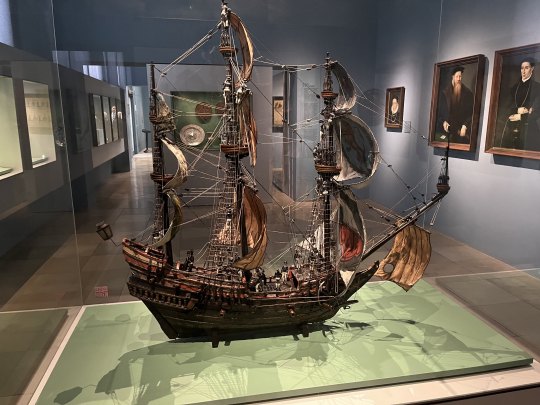
Beautifully detailed Modell Sailing Ship, early to mid 17th Century if I remember correctly. Interestingly enough all the little Sailor Figurines on it were very much early 19th Century in Style, so I assume the previous owner had those added at some Point, before the Museum acquired the Model in the late 19th Century. (The Incongruence sadly wasn't addressed on the Info Sign, so I might contact them about this too.)
#Aus dem Leben einer Taugenichts#Extant Garments#Historical Fashion#Germanisches National Museum#18th Century#19th Century#Museum
156 notes
·
View notes
Text
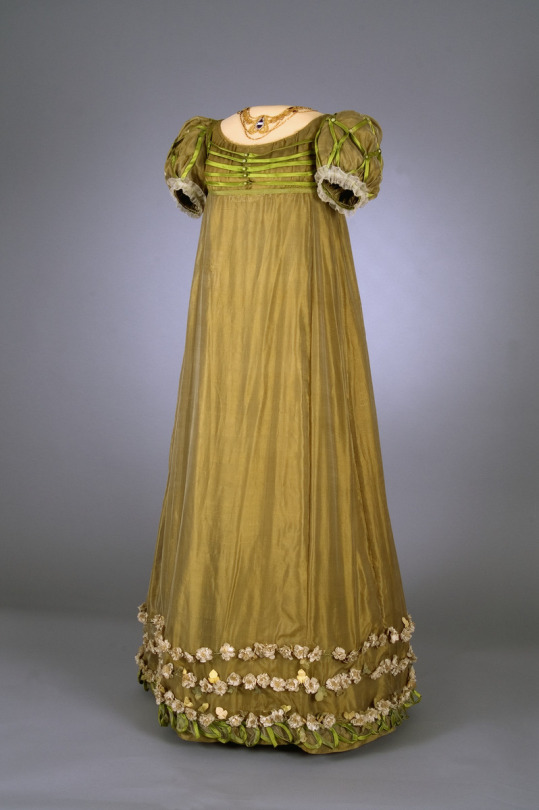
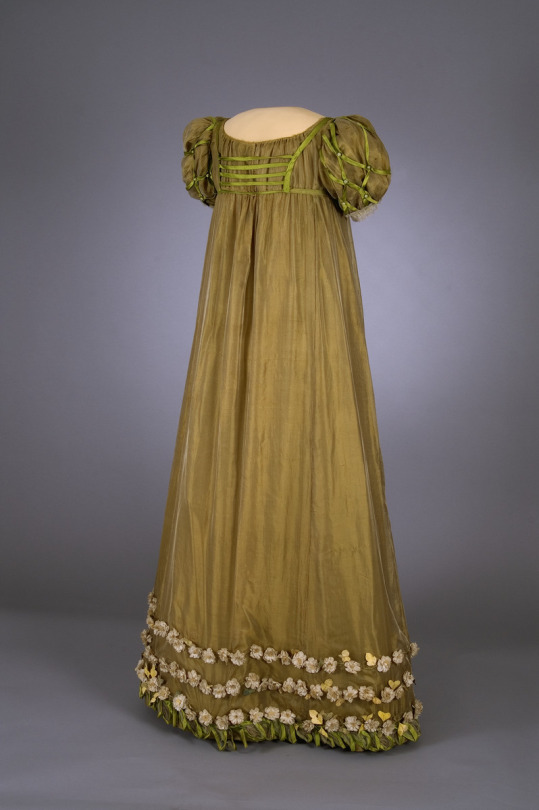
Empire style dress / empirepuku; naisten puku
C. 1810s, Napoleonic era
(Historical Collections, Armfelt Collection, Jan Lindroth, Porvoo)
The National Museum of Finland
#dress#gown#empire style#napoleonic era#napoleonic#Finland#National Museum of Finland#fashion history#history of fashion#historical fashion#The National Museum of Finland#embroidery#flowers#floral fashion#silk#first french empire#french empire#regency#regency fashion#19th century#19th century fashion#empire
81 notes
·
View notes
Text

Coriolanus at the Gates of Rome, Franz Anton Maulbertsch, ca. 1795
#art#art history#Franz Anton Maulbertsch#historical painting#ancient history#Ancient Rome#Roman history#mythological painting#Roman mythology#Coriolanus#Rococo#Austrian art#18th century art#oil on canvas#National Museum in Warsaw
48 notes
·
View notes
Photo
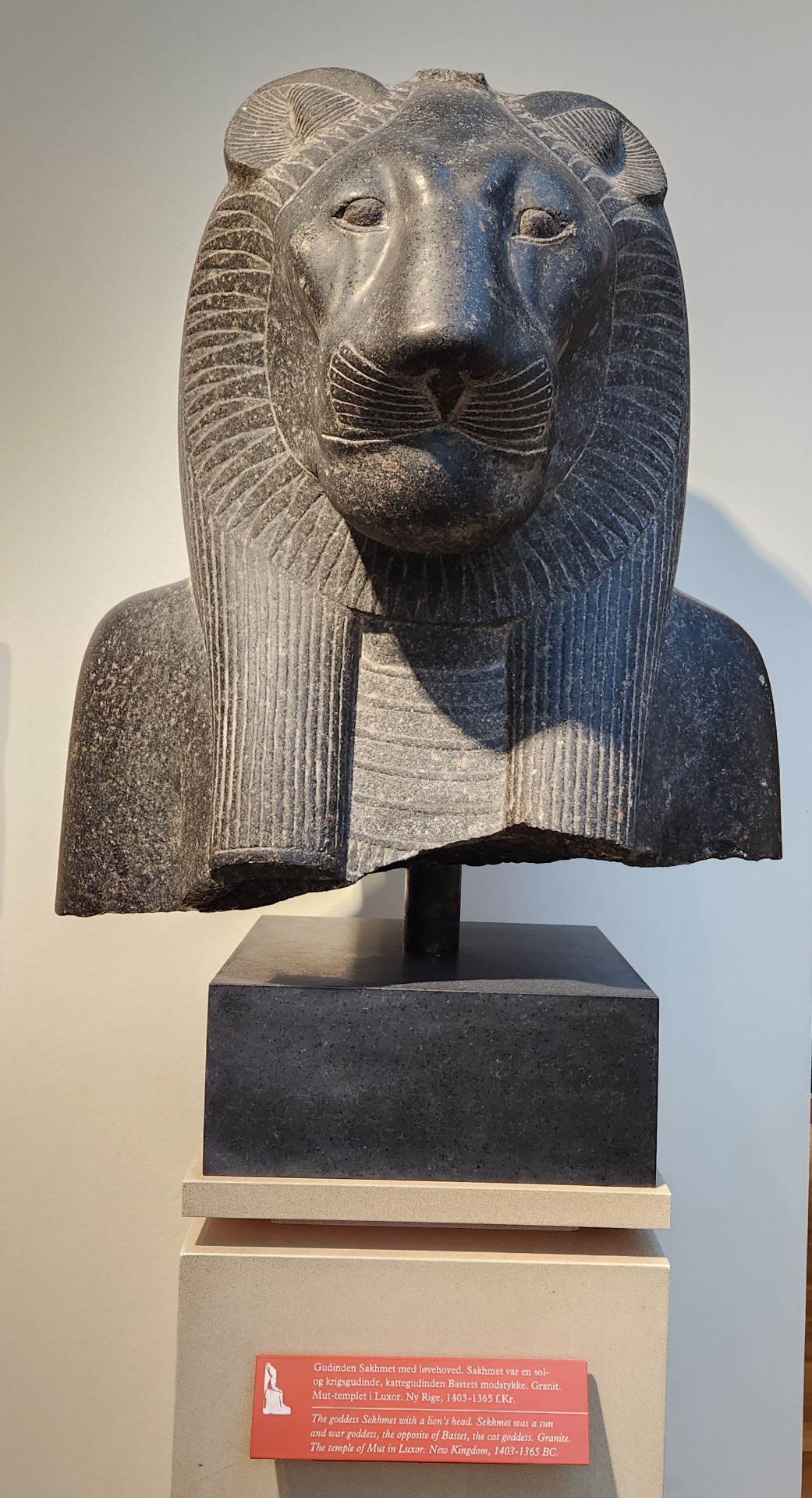
The goddess Sekhmet with a lion’s head.
Sekhmet was a sun and war goddess, the opposite of Bastet, the cat goddess.
Granite.
The temple of Mut in Luxor.
New Kingdom, 1403-1365 BC
National Museum of Denmark, Department of Classical and Near Eastern Antiquities
#history#denmark#national museum of denmark#history museums#museums#history museum#museum#ancient egypt#new kingdom egypt#new kingdom egypt artifacts#ancient egypt artifacts#historical artifacts#sekhmet
92 notes
·
View notes
Photo
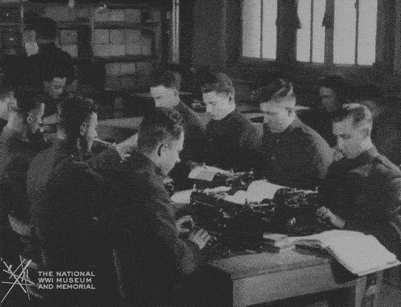
(via GIPHY)
#giphy#happy administrative day#happy secretary day#black and white#working#military#typing#footage#soldiers#uniform#typewriter#historic#wwi#secretary#national archives#world war i#great war#first world war#national wwi museum and memorial#at work#doughboy#american soldier
19 notes
·
View notes
Text

Wah-kon-tah-he-um-pah “Mollie Kyle Burkhart” (right) and her sisters Wah-hrah-lum-pah “Anna Kyle Brown” (center) and Me-se-moie “Minnie Kyle Smith” (left).
—Raymond Red Corn collection, Osage Nation Museum.
#Osage Nation#Osage Nation Museum#Mollie Burkhart#Anna Brown#Minnie Smith#Raymond Red Corn#Photography#Historical Photography#Native American Heritage Month#Native American History#History#American History#Reign of Terror#Killers of the Flower Moon
29 notes
·
View notes
Text
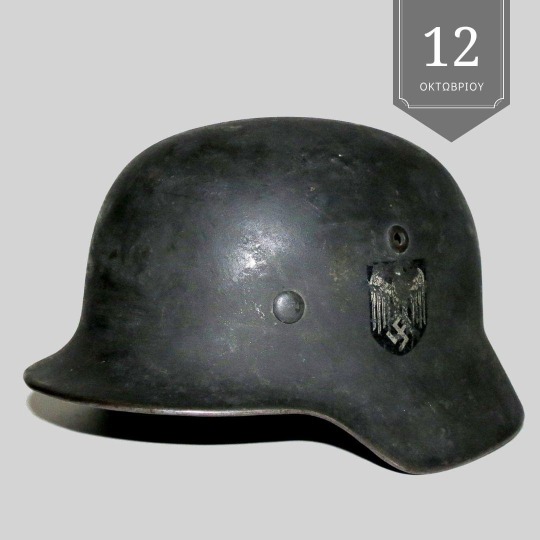
On October 12, 1944, the Germans leave Athens.
📷"The helmet of the last Nazi who left Athens"
This helmet fell off the head of one of the last German soldiers to leave Athens, on the downhill of Anagnostopoulou Street, while they were fleeing at full speed on motorcycles. The helmet was collected by Stéfanos Ayélastos who donated it to the National Historical Museum on October 28, 1964.
© Historical and Ethnological Society of Greece
Photo from the National Historical Museum
#greece#history#wwii#ww2#helmet#world war 2#Greek history#national historical museum#museums#Athens#attica#Sterea Hellas#central Greece#mainland#cw: Nazi mention#tw Nazi mention
25 notes
·
View notes
Text
If you have any questions as you plan your trip to the national historical museum, http://nusafm.org/Default.aspx please does not be uncertain to make apply of the question. Please let us know how we can assist you in planning your trip to this national historic center. We look forward to your visit!
0 notes
Text

The National Building Museum, Washington, DC
photo: David Castenson
372 notes
·
View notes
Text
Its #BatAppreciationDay so please appreciate this awesome 19th century Japanese kosode decorated with embroidered lucky bats, photographed in 2019 at The Life of Animals in Japanese Art exhibition at the National Gallery of Art in DC:

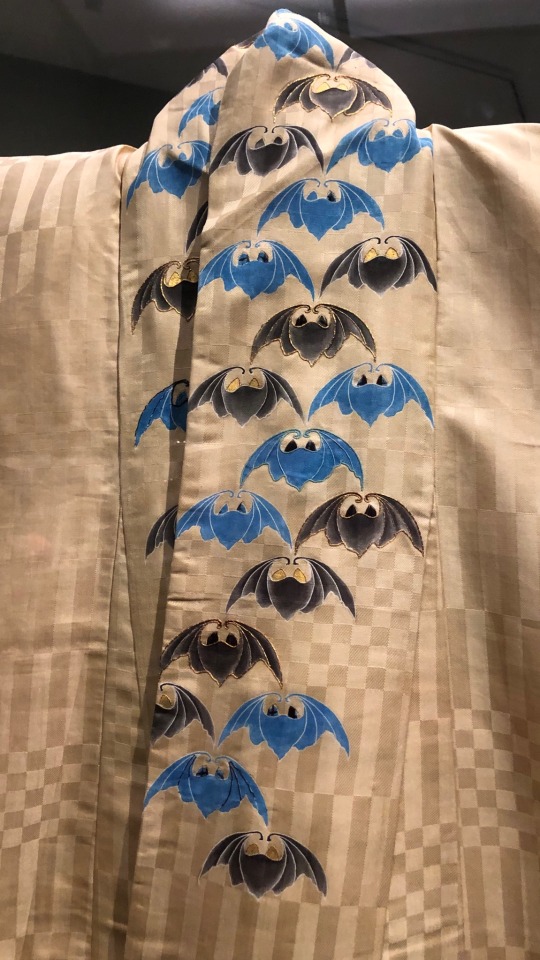


Kosode with Bats
Japan, Edo - Meiji periods, 19th century
silk twill, paste-resist dyed, embroidery, 67⅜ × 48⅞ in.
National Museum of Japanese History, Chiba Prefecture
“In the West, bats - nocturnal in habit and denizens of dark places tend to be viewed as unlucky, but in China they have long been considered an auspicious motif (one of the characters used to write the word "bat" is a homonym for good fortune). The Kabuki actor Ichikawa Danjüro VII (1791-1859) used bat motifs in his costumes, and the perception of these animals as a chic design element spread rapidly throughout Japan in the nineteenth century. Here a great number of them are arranged in right-left symmetry from the base of the collar to the hem.”
The above info is from the official exhibition catalog - this bat kosode is on p. 124:
The Life of Animals in Japanese Art (2019)

#bat#bats#bats in art#animal holiday#Bat Appreciation Day#International Bat Appreciation Day#The Life of Animals in Japanese Art#exhibition#museum visit#National Gallery of Art DC#book recommendation#Amazon Associates#kosode#historical costume#Japanese costume#Kabuki#Japanese art#East Asian art#Asian art#19th century art#garment#embroidery#auspicious symbol#animal iconography#animals in art
563 notes
·
View notes
Photo
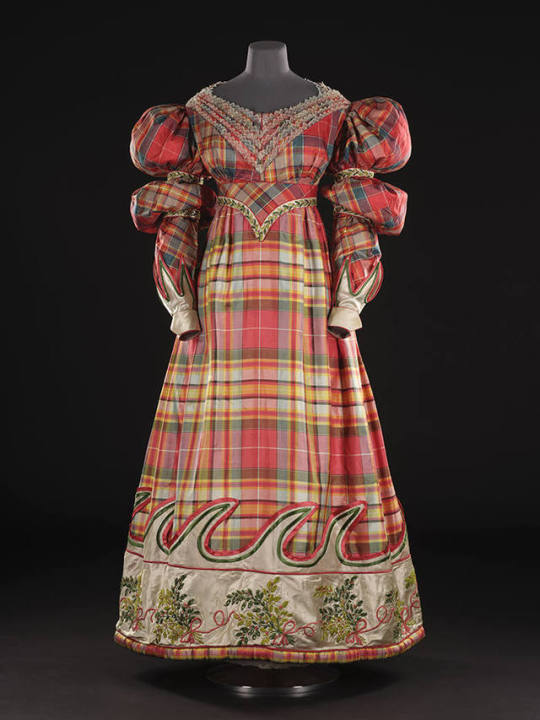
Dress
c.1832
National Museum of Scotland
#dress#fashion history#historical fashion#1830s#romantic era#romantic fashion#1832#19th century#red#tartan#plaid#scotland#national museum of scotland#popular
2K notes
·
View notes